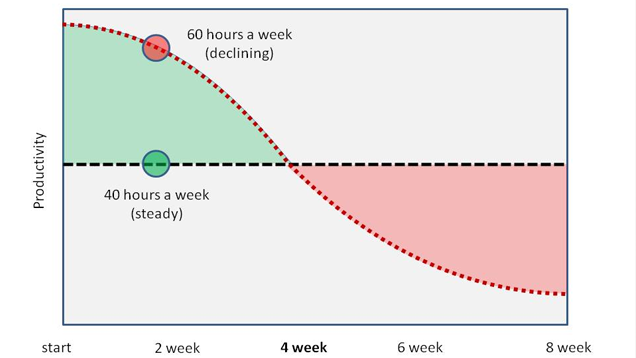At a excessive level, the method of aggregating knowledge could very well be described as making use of a perform to quite a lot of rows to create a smaller subset of rows. In practice, this frequently appears like a calculation of the entire matter of the variety of rows in a dataset, or a calculation of the sum of all the rows in a specific column. For a extra complete rationalization of the fundamentals of SQL combination functions, take a look at the mixture features module in Mode's SQL School.
Pandas groupby is an ideal technique to group values of a dataframe on a variety of column values. When performing such operations, it'd ensue that you'll want to know the variety of rows in every group. In this tutorial, we'll inspect the means to depend the variety of rows in every group of a pandas groupby object. Pandas group by operate is used for grouping DataFrames objects or columns dependent on exact situations or rules. Using the groupby function, the dataset administration is easier.
Using the Pandas library, one could implement the Pandas group by operate to group the info in accordance with distinct types of variables. Most builders used three fundamental strategies for the group by function. First, splitting through which files divide into teams elegant on some distinct conditions. In the end, mix the output within the shape of knowledge structure.
Let's investigate some examples of counting the variety of rows in every group of a pandas groupby object. First, we'll create a pattern dataframe that we'll be utilizing all due to this tutorial for demonstrating the usage. It returns a pandas collection with the rely of rows for every group. That is, it provides a rely of all rows for every group regardless of whether or not they're NaN or not. The operate we move need to take a collection of knowledge as enter and return a single worth that's positioned within the ultimate grouped DataFrame.
If the operate output is a Python info construction like an inventory or dictionary then the thing shall be handed into the grouped DataFrame. Because these objects are messy to work with inside a Pandas DataFrame, it's preferable to have your combination features return solely a single value. We can prolong the performance of the Pandas .groupby() approach even additional by grouping our info by a number of columns. So far, you've grouped the DataFrame solely by a single column, by passing in a string representing the column. However, you may as well cross in an inventory of strings that characterize the various columns.
One of probably the most elementary evaluation capabilities is grouping and aggregating data. In some cases, this degree of study could be enough to reply commercial enterprise questions. In different instances, this pastime is likely to be step one in a extra complicated information science analysis. In pandas, the groupbyfunction will be mixed with a number of aggregation capabilities to in a timely fashion and simply summarize data. This idea is deceptively easy and most new pandas customers will realize this concept. However, they could be stunned at how helpful complicated aggregation capabilities will be for supporting subtle analysis.
Pandas comes with an entire host of sql-like aggregation capabilities you may apply when grouping on a number of columns. This is Python's closest akin to dplyr's group_by + summarise logic. Here's a fast instance of how you can group on one or a number of columns and summarise facts with aggregation capabilities applying Pandas. A helpful gizmo for exploring a dataset is the describe approach to the groupby object. This methodology in a timely fashion calculates the count, mean, commonplace deviation, min, quartiles, and max values in a single command. You can cross varied different sorts of syntax contained in the argument for the agg() method.
How To Group By Using Two Columns In Python I selected a dictionary as a result of that syntax will probably be valuable once we wish to use combination strategies to a number of columns afterward on this tutorial. The agg() way enables us to specify a number of capabilities to use to every column. Below, I group by the intercourse column after which we'll apply a number of combination strategies to the total_bill column. Inside the agg() method, I cross a dictionary and specify total_bill because the important thing and an inventory of combination strategies because the value. For example, in our dataset, I need to group by the intercourse column after which throughout the total_bill column, discover the imply invoice size. You can even use the pandas groupby count() operate which provides the "count" of values in every column for every group.
For example, let's group the dataframe df on the "Team" column and apply the count() function. Pandas additionally comes with a further method, .agg(), which makes it possible for us to use a number of aggregations within the .groupby() method. The methodology makes it possible for us to move in an inventory of callables (i.e., the operate half with out the parentheses). Let's see how we will apply the various capabilities that include the numpy library to combination our data. At this point, we have absolutely replicated the output of our unique SQL question when offloading the grouping and aggregation work to pandas.
Again, this instance solely scratches the floor of what's feasible making use of pandas grouping functionality. Many group-based operations which might be complicated making use of SQL are optimized inside the pandas framework. This consists of issues like dataset transformations, quantile and bucket analysis, group-wise linear regression, and software of user-defined functions, amongst others.
Access to a lot of these operations notably widens the spectrum of questions we're competent to answering. As an example, we're going to make use of the output of the SQL question named Python as an enter to our Dataframe in our Python notebook. Note that this Dataframe doesn't have any of the aggregation capabilities being calculated by way of SQL. It's purely making use of SQL to pick the required fields for our analysis, and we'll use pandas to do the rest. An additional advantage of conducting this operation in Python is that the workload is moved out of the info warehouse.
The commonest aggregation capabilities are an easy regular or summation of values. As of pandas 0.20, you will name an aggregation operate on a number of columns of a DataFrame. So far we've explored splitting our knowledge with groupby, however we've solely checked out a single combination operate imply to use to our grouped data. Pandas offers a set of pre-built combination capabilities that could cowl nearly all of duties wanted to research teams of data. For additional customization, we will provide our personal capabilities to the mixture method. The output of the groupby process is a devoted groupby object we will use within the remaining steps of our grouping procedure.
To fully grasp what the groupby object produces, we'll name the imply system to combination the info by calculating a mean. We will talk about extra aggregation resources later on this tutorial. When handling Pandas DataFrames, there are various events when we'll desire to separate our files up by some standards to carry out evaluation on particular person subsets. All database-emulating software program delivers resources for partitioning data, and for Pandas that device is the DataFrame groupby method. Users with SQL expertise will observe that the groupby system delivers a set of operations related in carry out to the SQL GROUP BY statement.
If you're comfy with SQL, it's possibly secure that you can skip this transient introduction on the fundamentals of grouping. Let's check out an instance of remodeling knowledge in a Pandas DataFrame. In this example, we'll calculate the share of every region's complete revenue is represented by every sale. In order to do this, we will apply the .transform() approach to the GroupBy object. We can move within the 'sum' callable to return the sum for your complete group onto every row. Finally, we divide the unique 'sales' column by that sum.
An aggregated operate returns a single aggregated worth for every group. Once the group by object is created, a number of aggregation operations should be carried out on the grouped data. What if we wish to filter the values returned from this question strictly to commence out station and finish station mixtures with greater than 1,000 trips? Since the SQL the place clause solely helps filtering files and never consequences of aggregation functions, we'll have to seek out one extra way.
The pandas normal aggregation features and pre-built features from the python ecosystem will meet lots of your evaluation needs. However, you'll probably desire to create your personal customized aggregation functions. Instructions for aggregation are presented within the shape of a python dictionary or list. The dictionary keys are used to specify the columns upon which you'd prefer to carry out operations, and the dictionary values to specify the carry out to run. In the code, you employ the aggregation carry out sum / len to calculate the typical worth for every attribute of the grouped rows.
But you can actually substitute this half together with your personal aggregation operate resembling average, variance, length, minimum, maximum, etc. Now the groupby methodology first splits the info by Type, and info inside every Type group is additional cut up into subgroups by the values within the Test_1_Grade column. The averages could look simply a little humorous in our Test_2 column as a result of how we composed our DataFrame, however the groupby techniques efficiently performs its job. Okay, all the examples above we had simply two columns in our dataframe. And we used one column for groupby() and the opposite for computing some function.
What about when you've got a number of columns and also you must do various issues on every of them. Here is the ensuing dataframe after making use of Pandas groupby operation on continent observed by the aggregating operate size(). The GROUP BY clause is usually used with combination capabilities akin to AVG(), COUNT(), MAX(), MIN() and SUM(). In this case, the mixture operate returns the abstract facts per group.
For example, given teams of merchandise in a number of categories, the AVG() carry out returns the typical rate of merchandise in every category. Notice that I even have used totally completely different aggregation functions for various functions by passing them in a dictionary with the corresponding operation to be performed. This allowed me to group and apply computations on nominal and numeric functions simultaneously. In my work, the velocity of code writing and studying will likely be extra primary than the velocity of its execution. Right now, I'm dealing with a problem of optimizing the operating time of a reasonably complicated information science project. After quite a few profiling, I recognized the most important time consumers.
One of such time-consuming steps concerned grouping a Pandas DataFrame by a key, sorting every group by a rating column, and taking first N parts in every group. The tables on this step are fairly small not multiple hundred elements. But since I need to carry out this step many times, the operating time accumulates to a considerable fraction. A good approach to utilize the .groupby() approach is to filter a DataFrame.
This strategy works exceedingly in a totally different way from a traditional filter because you'll apply the filtering way primarily based on some aggregation of a group's values. For example, we will filter our DataFrame to do away with rows the place the group's standard sale worth is lower than 20,000. The purpose for making use of this way is to interrupt a large information evaluation situation into manageable parts. This lets you carry out operations on the person components and put them returned together. While the apply and mix steps appear separately, Pandas abstracts this and makes it seem as if it was a single step.
Applying the groupby() methodology to our Dataframe object returns a GroupBy object, which is then assigned to the grouped_single variable. An valuable factor to notice a few pandas GroupBy object is that no splitting of the Dataframe has taken place on the purpose of making the object. The GroupBy object merely has all the knowledge it wants concerning the character of the grouping.
No aggregation will happen till we explicitly name an aggregation operate on the GroupBy object. The having clause permits customers to filter the values returned from a grouped question structured on the outcomes of aggregation functions. Mode's SQL School presents extra element concerning the fundamentals of the having clause. At a excessive level, the SQL group by clause permits you to independently apply aggregation features to distinct teams of knowledge inside a dataset.
Our SQL School additional explains the fundamentals of the group by clause. The tuple strategy is restricted by solely with the ability to use one aggregation at a time to a selected column. If I should rename columns, then I will use the renamefunction after the aggregations are complete. In some unique instances, the record strategy is a helpful shortcut. I will reiterate though, that I suppose the dictionary strategy delivers some of the most strong strategy for almost all of situations. One space that should be mentioned is that there are a number of methods to name an aggregation function.
As proven above, you will move an inventory of features to use to a number of columns of data. This article will rapidly summarize the essential pandas aggregation features and present examples of extra complicated customized aggregations. Whether you're a brand new or extra skilled pandas user, I assume you're going to gain knowledge of just a few issues from this article. Alternatively, you will as well do group rows into listing applying df.groupby("Courses").agg() function.
Use the groupby() procedure on the Courses and agg() procedure to use the aggregation on each group of pandas.DataFrame. The previous dialogue centered on aggregation for the mix operation, however there are extra possibilities available. Now that we've appeared over some builtin aggregation tools, lets discover ways to make our very own aggregation functions. Aggregation with a given operate is carried out making use of the mixture procedure and passing in some operate f.
We'll additionally refresh your understanding of scales of data, and talk about points with creating metrics for analysis. The week ends with a extra sizeable programming assignment. There are quite a few capabilities or aggregations accessible that you just could apply on files teams reminiscent of count(), sum(), mean(), median(), mode(), std(), min(), max(). We may additionally group by a quantity of columns and apply an combination technique on a special column.
Below I group by people's gender and day of the week and discover the whole sum of these groups' bills. Below, I group by the intercourse column and apply a lambda expression to the total_bill column. The variety is the utmost worth subtracted by the minimal value. I additionally rename the only column returned on output so that's understandable. Most examples on this tutorial contain employing easy combination techniques like calculating the mean, sum or a count. However, with group bys, we've flexibility to use customized lambda functions.
With grouping of a single column, you may as well apply the describe() system to a numerical column. Below, I group by the intercourse column, reference the total_bill column and apply the describe() system on its values. Learn extra concerning the describe() system on the official documentation page. We get a dataframe of counts of values for every group and every column. Note that counts are the image of the row sizes we acquired above.
This is on account that there are not any NaN values current within the dataframe. Alternatively, you need to use the pandas value_counts() operate if you're grouping by a single column and need the counts. Another extremely useful method one could leverage the Pandas groupby technique is to remodel your data. By reworking your data, you carry out some operation-specific to that group. This can include, for example, standardizing the info elegant solely on that group employing a z-score or handling lacking facts by imputing a worth elegant on that group.



















































